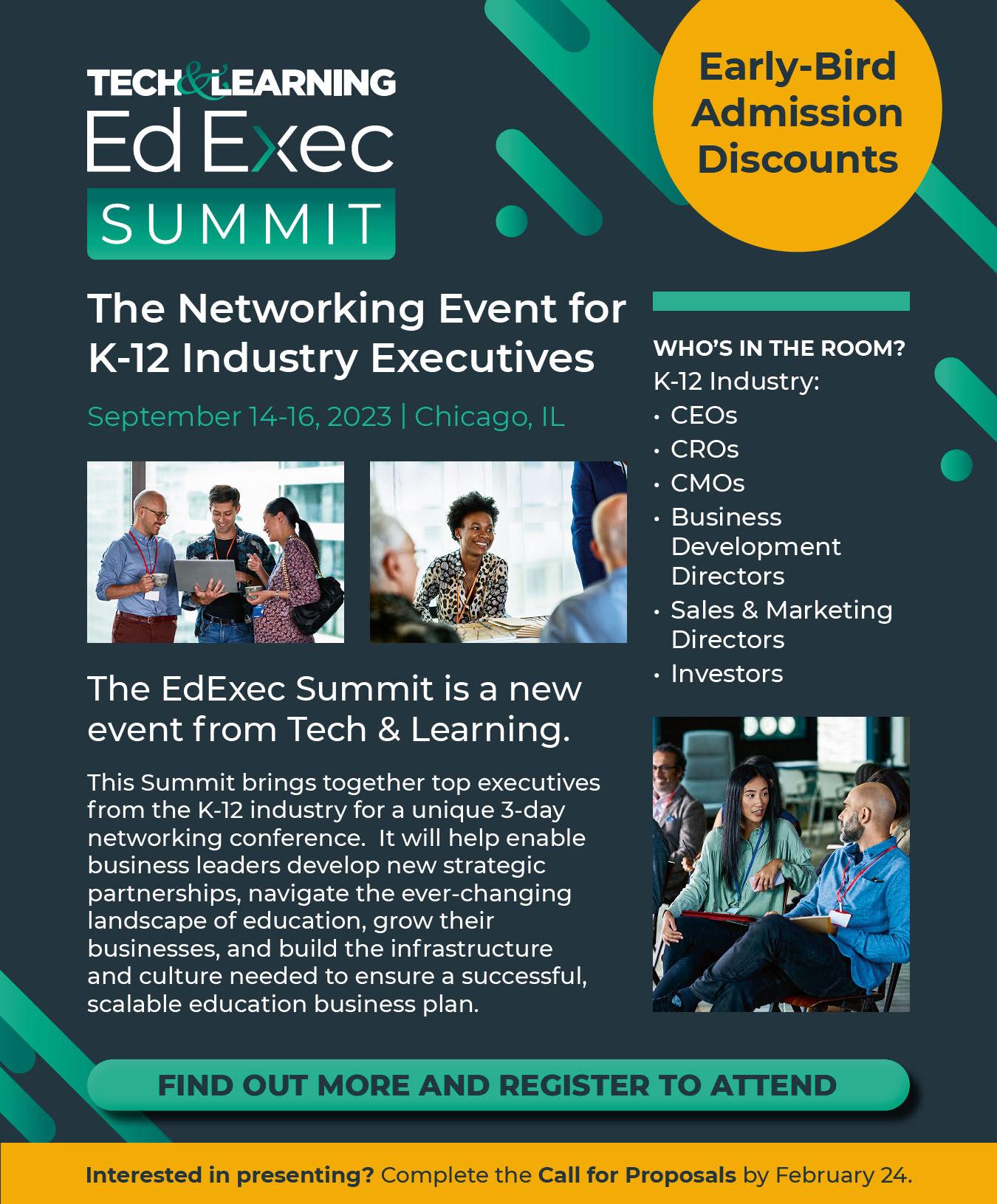TECH & LEARNING








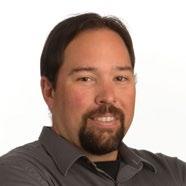
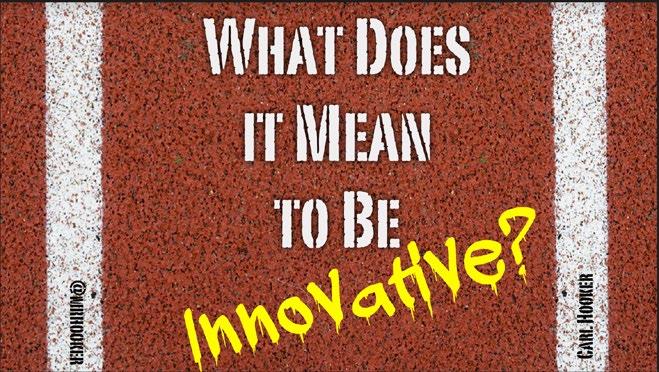
• The Tech & Learning Innovative Leader Summit brought together innovative district administrators to share ideas, best practices, and solutions to help to reshape and reimagine the future of education.
• The event kicked off with a keynote from educator, author, and international speaker Carl Hooker He asked attendees the prompting question: How do we change schools from places of conformity and compliance to environments that foster risktaking? He then shared the following slides: Click to view: Zone of Learning

The Tech & Learning Innovation Summit took place at an ideal location for innovating: the Liberty Science Center, a 300,000-square-foot learning center located in Liberty State Park on the Jersey City bank of the Hudson River near the Statue of Liberty. The venue houses 12 museum exhibition halls, a live animal collection with 110 species, giant aquariums, a 3D theater, live simulcast surgeries, hurricane- and tornadoforce wind simulators, K-12 classrooms and labs, teacher-development programs, and the Western Hemisphere’s biggest planetarium.

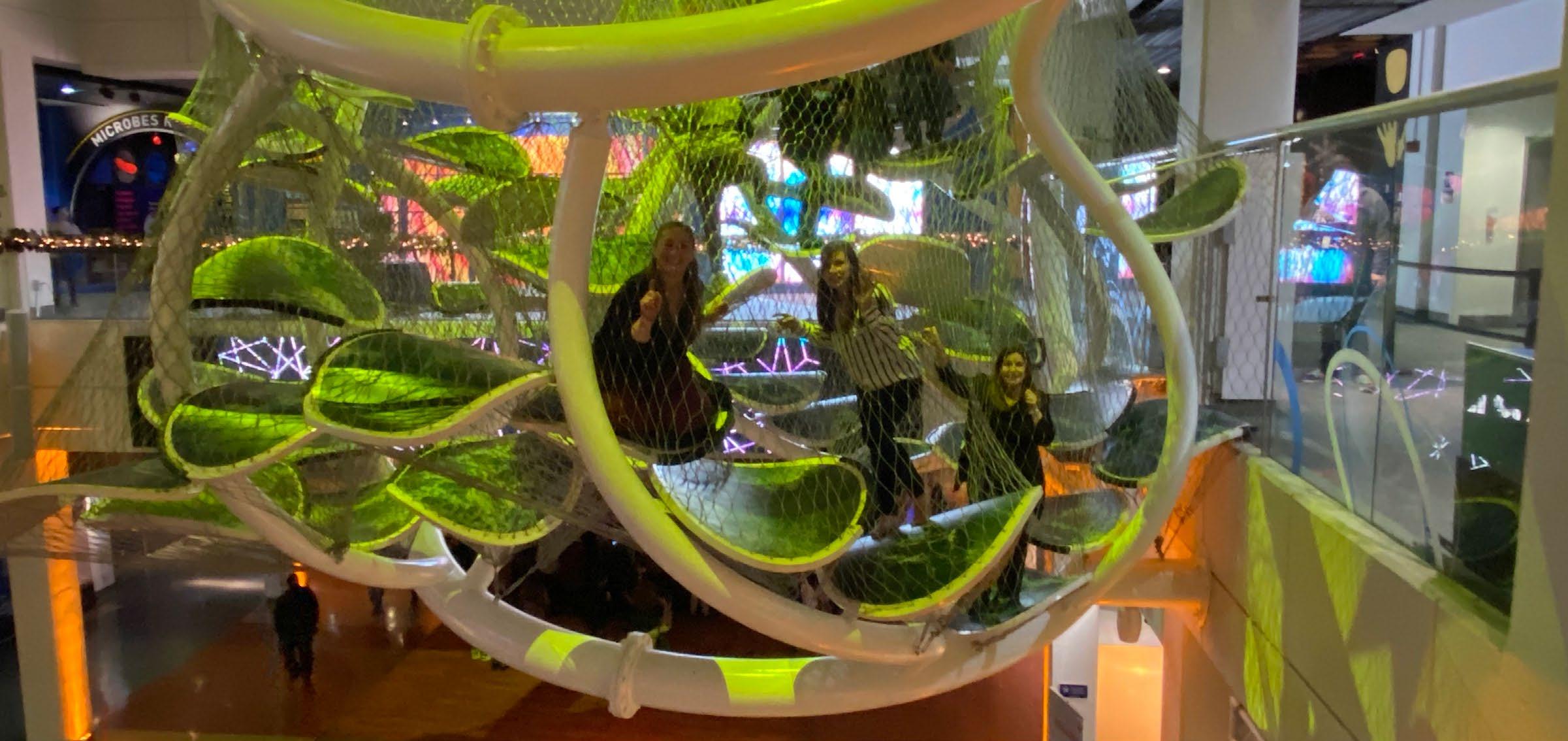
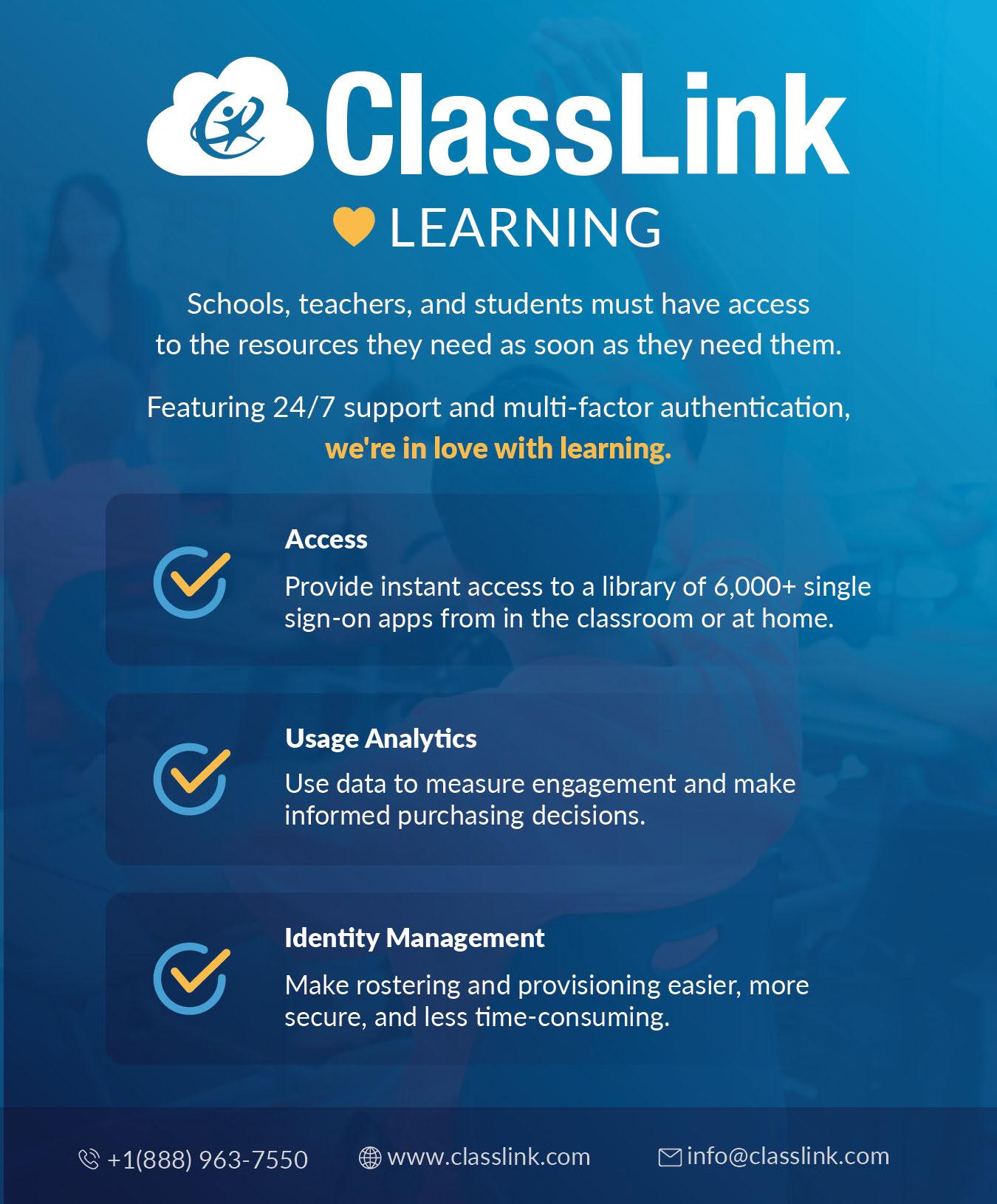
As part of our Regional Live Summits, Tech & Learning recognizes exceptional district administrators in select regions around the country who are leading innovation in their schools. We’re seeking district leaders who are reimagining and reinventing education by developing and launching unique and forward-thinking programs,
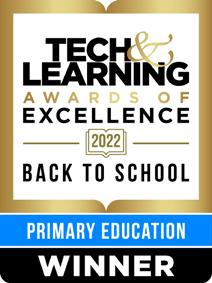




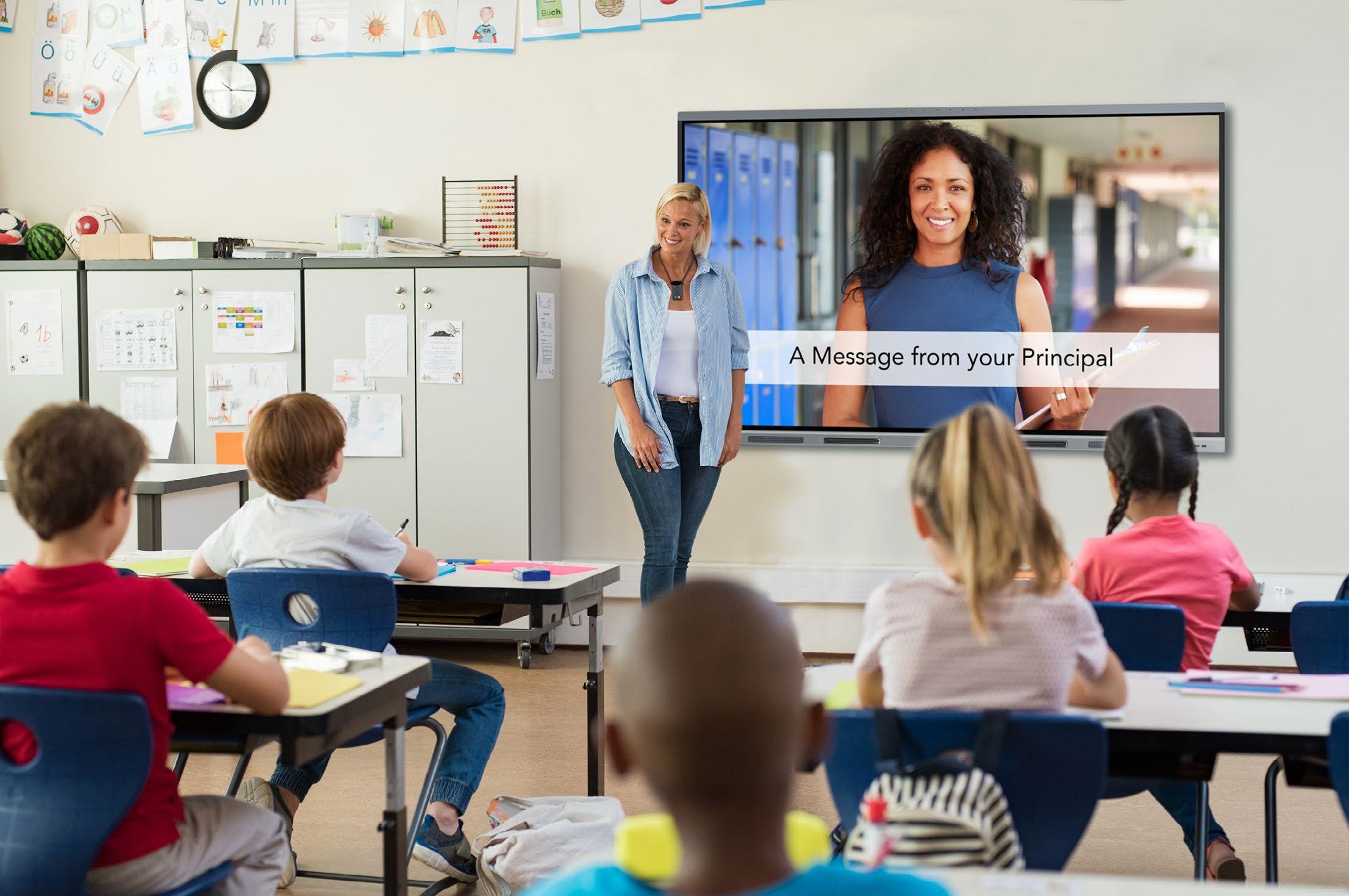
policies, and best practices that have shown to have a positive impact and are also replicable at other districts. All finalists will receive an invitation to the Tech & Learning Regional Summit in their region. Find our list of regions for award opportunities in 2023 here: www.techlearningevents.com/ innovativeleaderawards/home We look forward to learning more about your work!
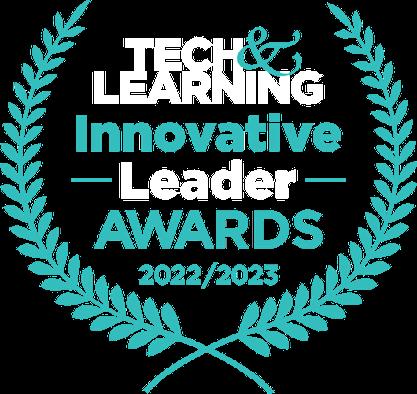
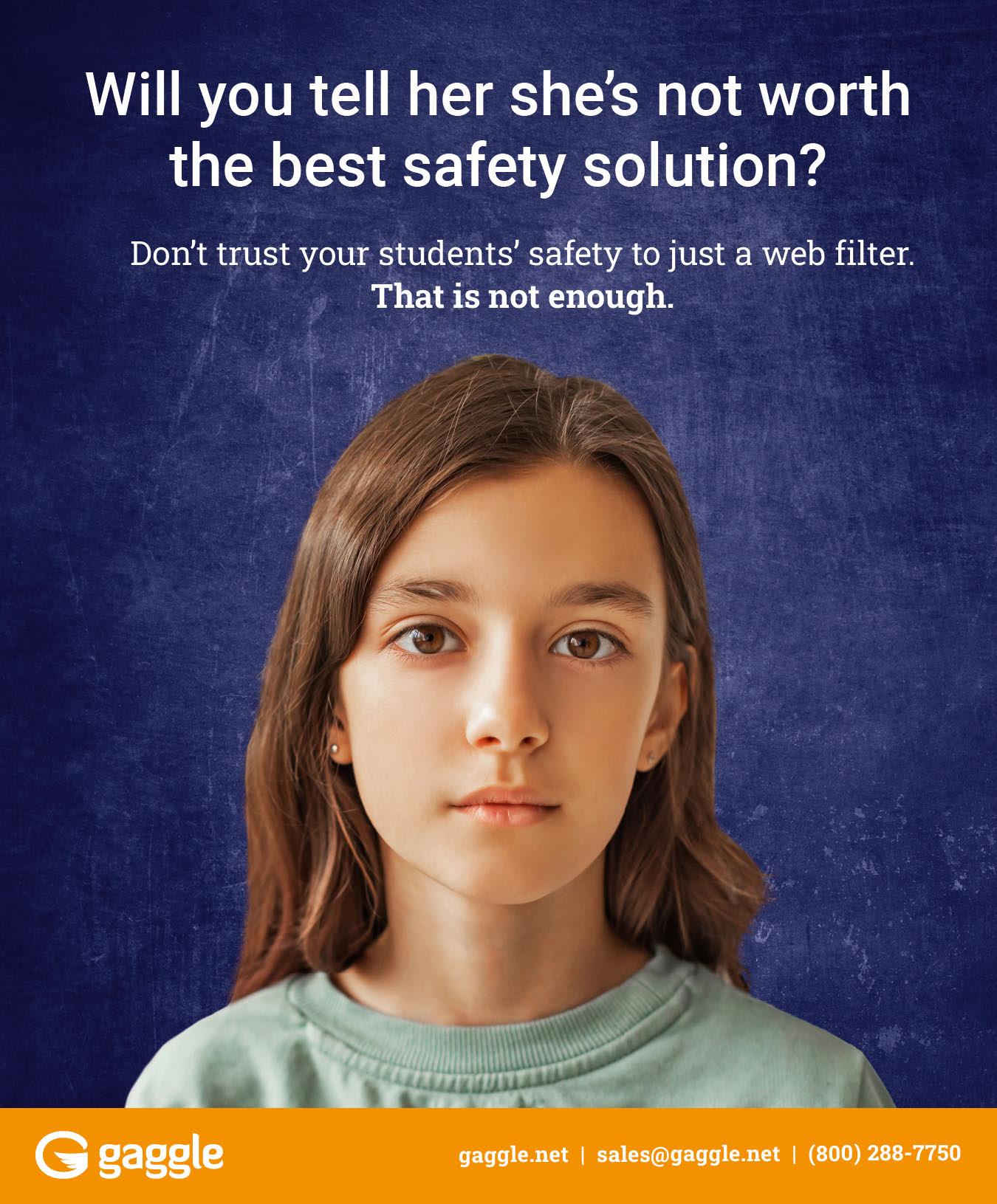
Attendees discussed ways that they have failed forward in their districts.
What has the biggest impact on innovation in your school? Take our poll here.
% POLL
Results will be published on techlearning. com on January 30, 2023.
• Attendees at the Tech & Learning Innovation Summit broke into Working Groups to review different scenarios that could impact their districts and collaboratively discussed solutions to these challenges.
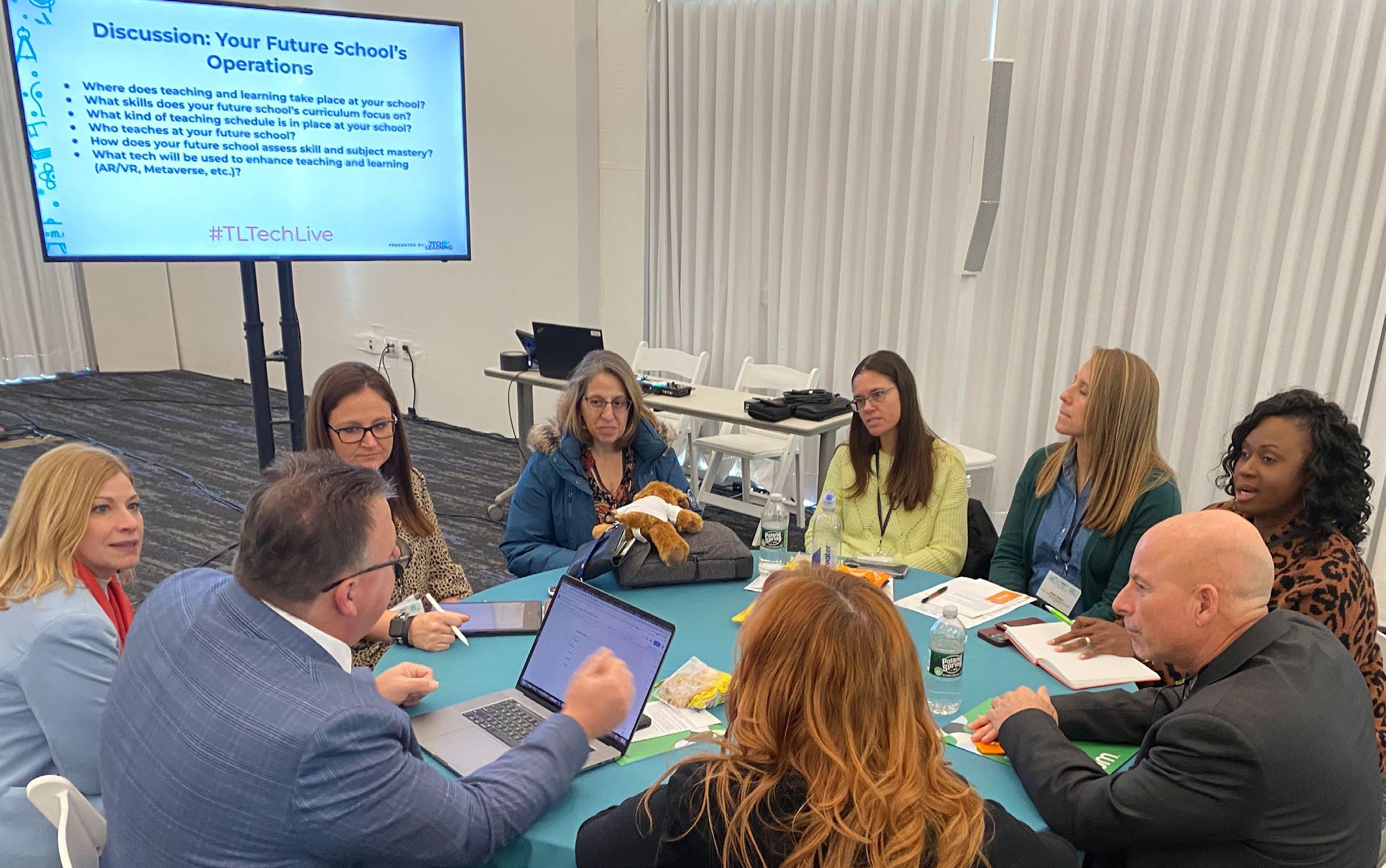

• Matt Joseph, Director of Supervision and Evaluation at Brockton Public Schools in Massachusetts and a regular contributor to Tech & Learning, shared how his first professional development session as principal “was a disaster.”
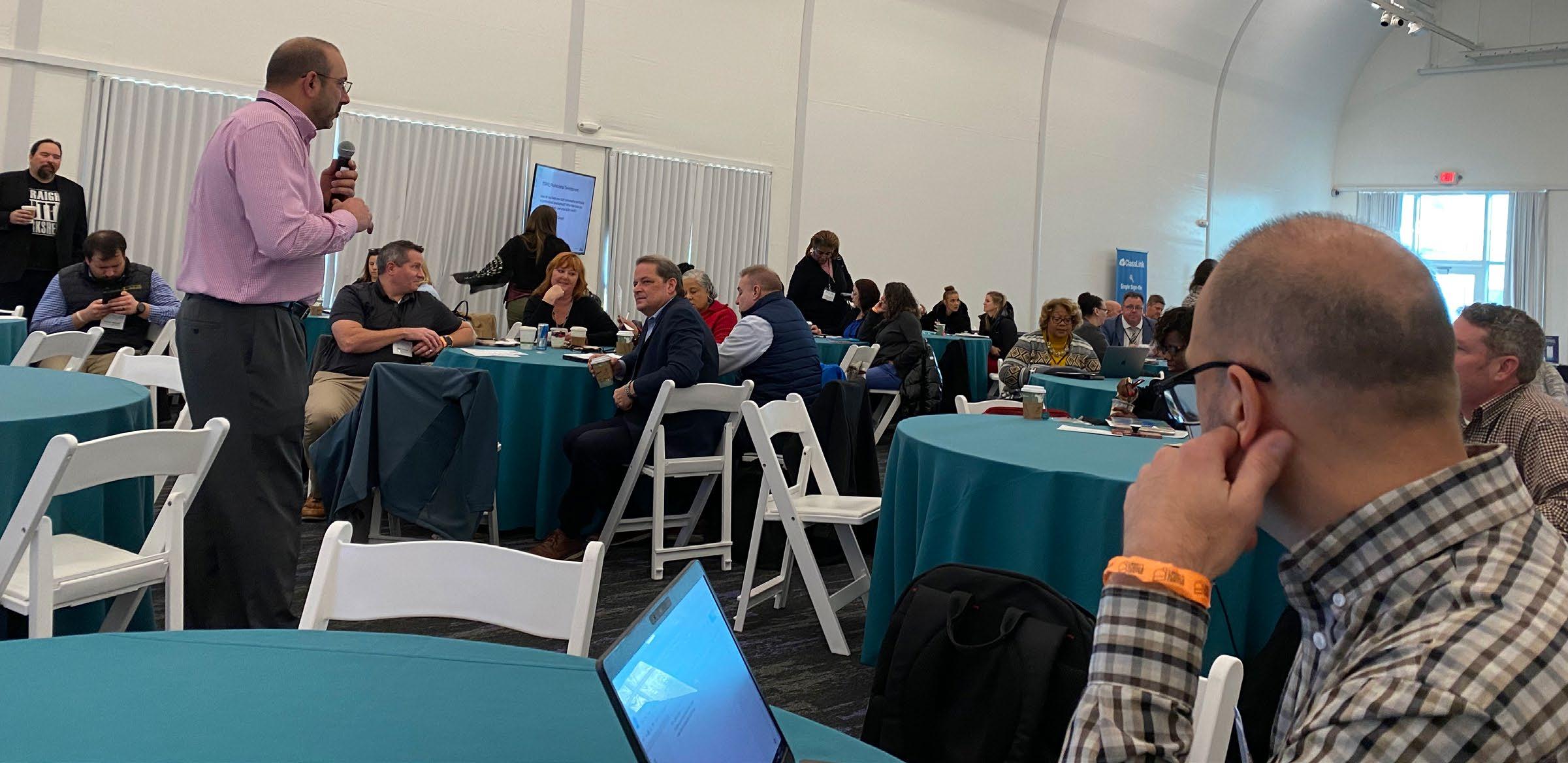
• Joseph: “I was afraid to show what I didn’t know. That first PD session was just me talking about what I knew from school in sit-and-get sessions. I had to get over the fear of giving up control and learn to be myself.”
• Showing his personality, Joseph created a fun PD team-building exercise for the next training that began with a Mission Impossible-style video laying out the parameters of a scavenger hunt, which required team members to find “objects” around the school, such as grade-
specific lesson plans. In doing so, teachers were able to share various instruction approaches.
• Joseph: The PD was a hit, encouraged collaboration, communication, and problemsolving. “It let the people who were doing the work show their work.”
• Kyle McCartney, principal at Gulf Shores Middle School in Alabama, shared how he embraced the concept of a pineapple chart, a calendar that can be posted in the staff room that encourages teachers to invite their colleagues to sit in during the presentation of specific lessons.
• McCartney discussed printing a laminated pineapple to put on the doors of teachers who want to welcome other staff to observe instruction. His goal is to distribute three pineapples per day throughout the school so others can constantly see who is teaching something new.
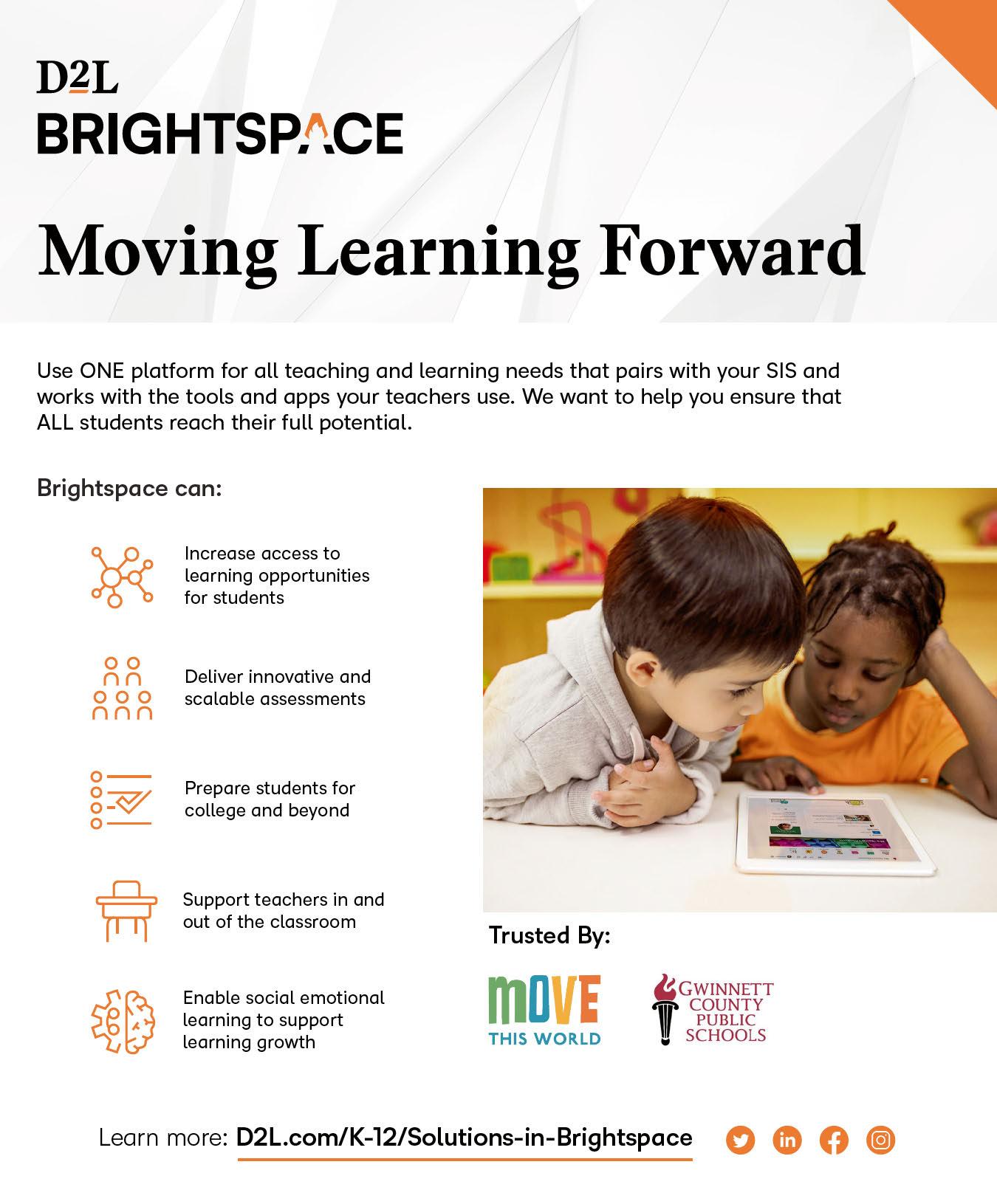
Mike Gaskell discussed his district’s “schoolhouse adjustment” program.
• Mike Gaskell, principal of East Brunswick Schools in New Jersey, discussed a “schoolhouse adjustment” program he developed using school resource officers (often former law enforcement officers) to reach disadvantaged children and their families to help foster positive connections with law enforcement. He later retooled it to feature teacher-led teams with support from resource officers.
• Gaskell: “We need unconventional ways to reach disadvantaged children because the conventional ones aren’t always working.” He characterized the program as “restorative justice with a mentoring twist.”
• Exposing students to former law enforcement gives those students an opportunity to share
positive experiences with their families and build trust.
• Gaskell: “A suspension has no positive effect on the student – no student comes back from suspension and is reformed.” He added, “By bringing students in and not suspending them, we’re holding them accountable in another, non-punitive way.”
• Since implementing the program, suspension rate has been reduced to one-third of the previous level, and bullying incidents have been cut in half.
• Gaskell also emphasized the importance of developing a diverse staff to help make better connections to families as well as how to lead through better digital communication with families.

With 24/7 access to personalized tutoring, after-school enrichment, and college and career support, Paper puts success at every student’s fingertips.
Learn how we work with school districts across the nation.

“
• Andrew Wallace, Director of Technology for South Portland Schools in Maine, advised summit attendees to “always have a $1 million project ready to go.”
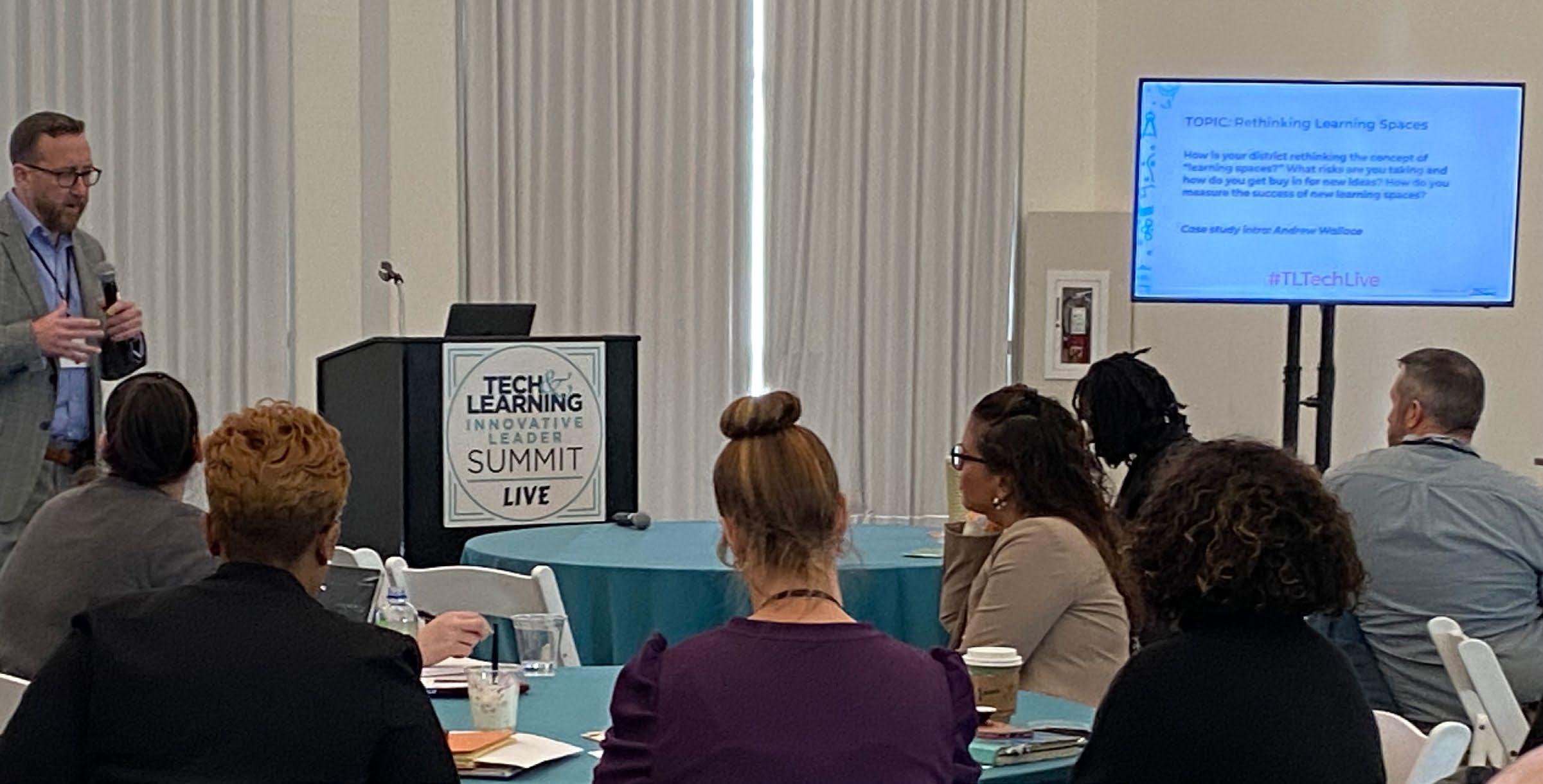
• Wallace: “My job now is to create spaces in which students can learn better and teachers can teach better, and how we can move education forward.”
• Wallace shared how pre-pandemic he invested in more than a dozen interactive whiteboards, which he put on carts to try and move away from the old stand-and-teach from the front of the room as well as provide better access.
• Thanks to ESSER funding, Wallace launched an initiative focused on improving classroom audio, not only because everyone was wearing masks but studies show that many people have
hearing-related challenges. “We don’t need to make kids share their disabilities,” he said. “By improving audio, everyone can improve.”
• Teachers wear lanyards that are connected to in-room sound systems to help boost audio so that kids can hear clearer. “Not using these kinds of systems can be educational malpractice,” Wallace said.
• Wallace: “You have to bring in stakeholders from the start and be transparent with the ‘Why’ of any tech integration.”
• Wallace has other advice for tackling classroom redesign, including embracing a Universal Design for Learning (UDL) framework and consulting with teachers on learning space upgrades.
Andrew Wallace advises Summit attendees to “always have a $1 million project ready to go.”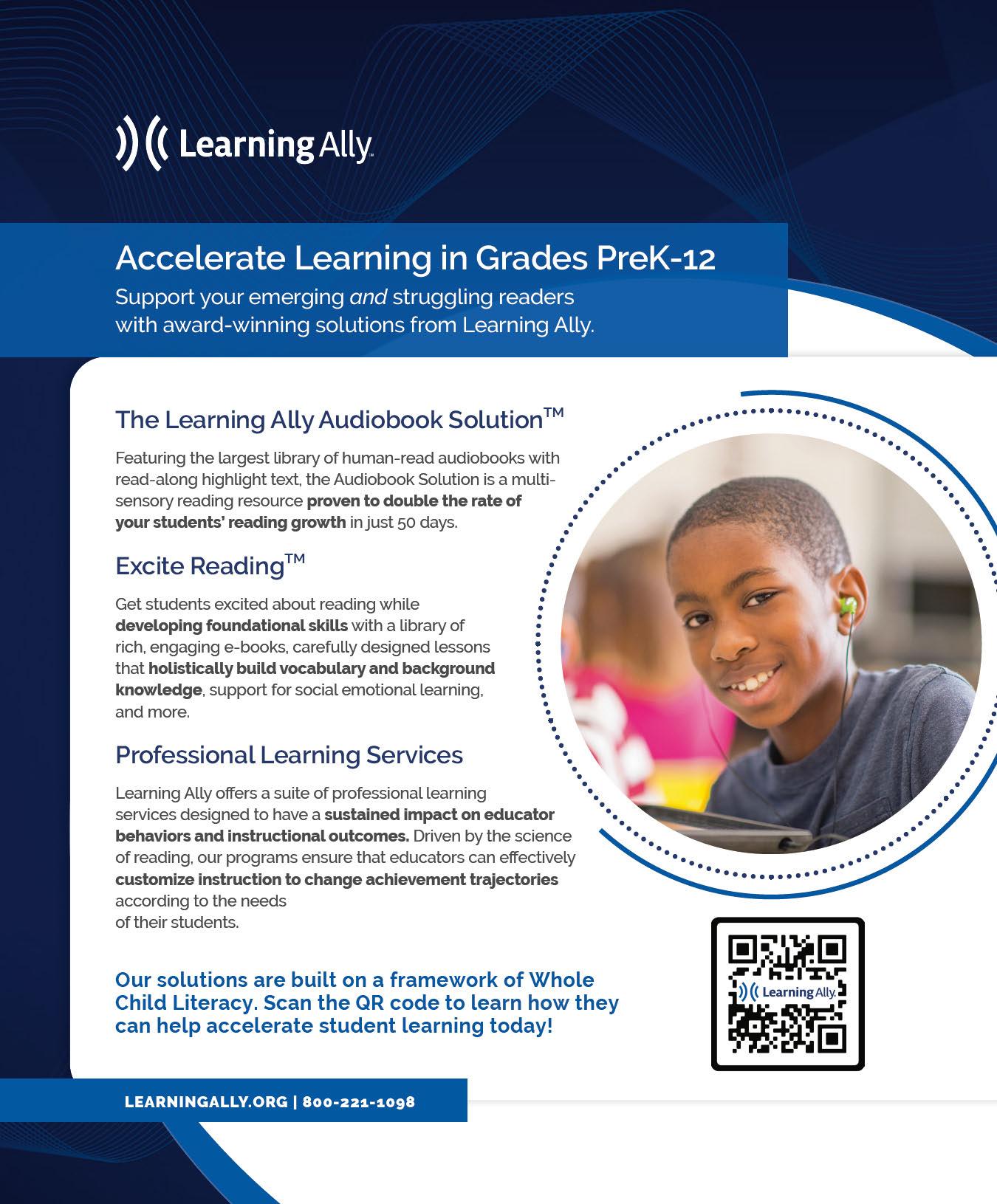
• Glenn Robbins, Superintendent of Brigantine School District in New Jersey, introduced the discussion on changing pedagogy with a reflection on how to sustain the willingness to try new approaches that happened during the pandemic.

• Robbins has emphasized creating psychological safety nets with his staff, and encourages them to try new things.
• Robbins: “By building trust and respect with the staff, you can make changes. You have to support them first. Catch them doing the good things, and give them praise. They have to know you have their back. Once teachers understand that they can evolve, they can give students the same ability to be creative and try new things as well.”
• For example, Robbins shared how when he came to the district, which is a small town located on the Jersey shore, he encouraged teachers to take students on field trips to the local beach to explore the environment and provide fresh air mental health breaks. “A teacher of 31 years told me, ‘We were never allowed to do this before,’” he said.
• Robbins: “After someone tries something new and fails, I ask, ‘Did you die? No, then let’s learn from it.’”
• Robbins believes one key to building engagement and changing learning is to create a physical student-centered learning space that when students and teachers show up they’ll say, “Wow, I want to be here,” versus “Ugh, I’m here again.”
Glenn Robbins emphasized creating psychological safety nets with his staff, and encourages them to try new things.
What do you think is the biggest barrier to driving change and innovation in schools? Take our poll here.

Results will be published on techlearning. com on January 30, 2023.
• Attendees at the Tech & Learning Innovation Summit were grouped into teams to answer the question: “What does the ideal school look like?” The teams were told that they have unlimited funds, no politics, no state or federal mandates.
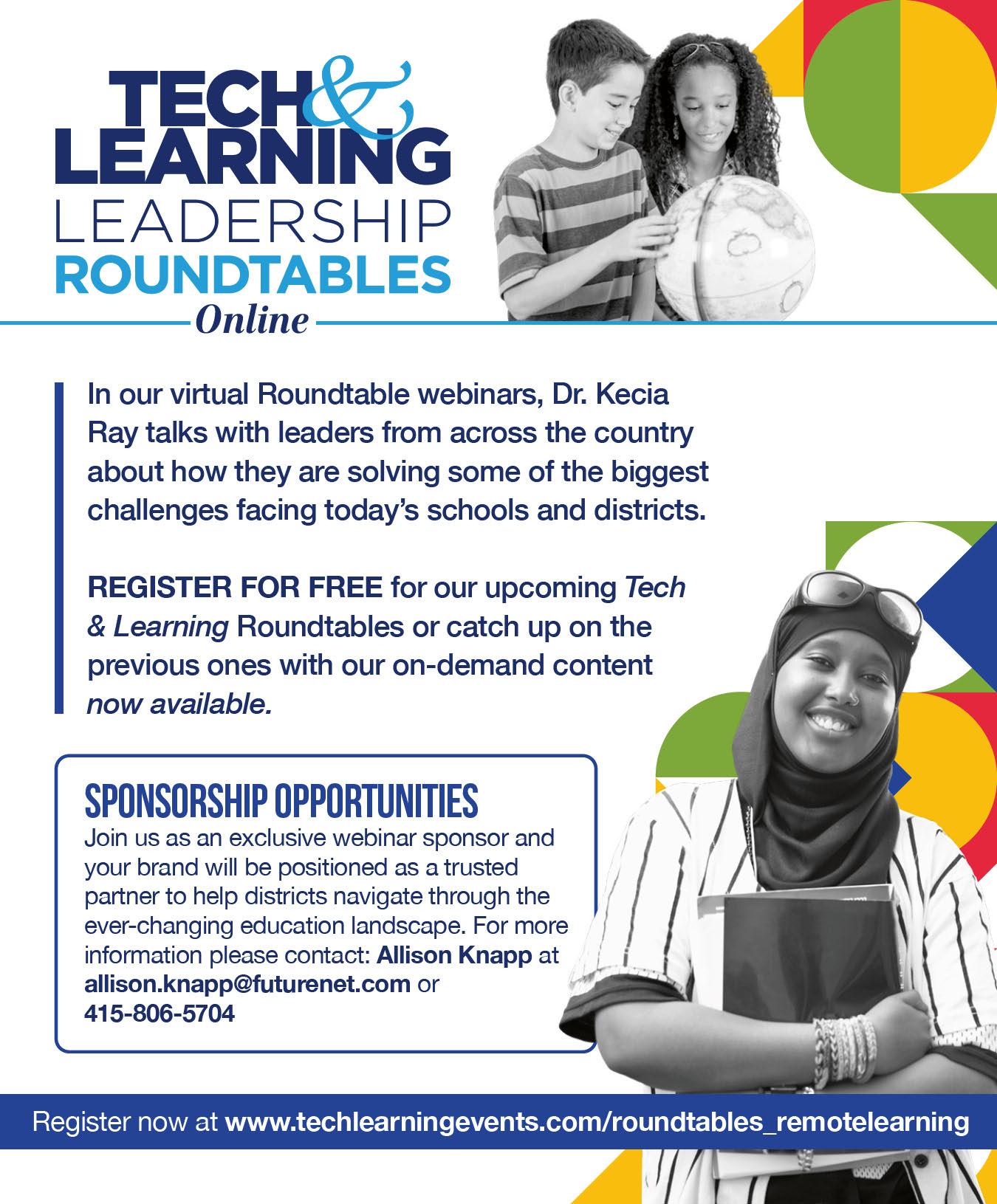
Teams were asked to design schools that addressed questions such as:
• What are the core values of your future school?
• Where does teaching and learning take place at your school?
• How are students grouped in your future school? Will you still group students by grade based on their ages?
• How will you work with your parents & community at your school?
• On what skills does your future school’s curriculum focus?
• How will your school address learning mastery?

• The winning team presented their “Centre for Innovative Learning.” Their plan converted an abandoned shopping mall into a center for learning that “Ignited the Flame in All Learners.”
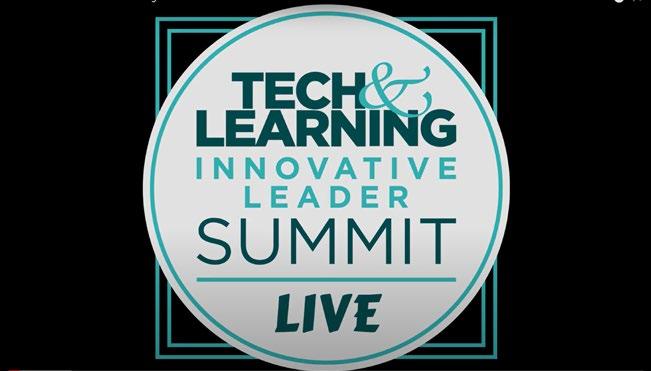
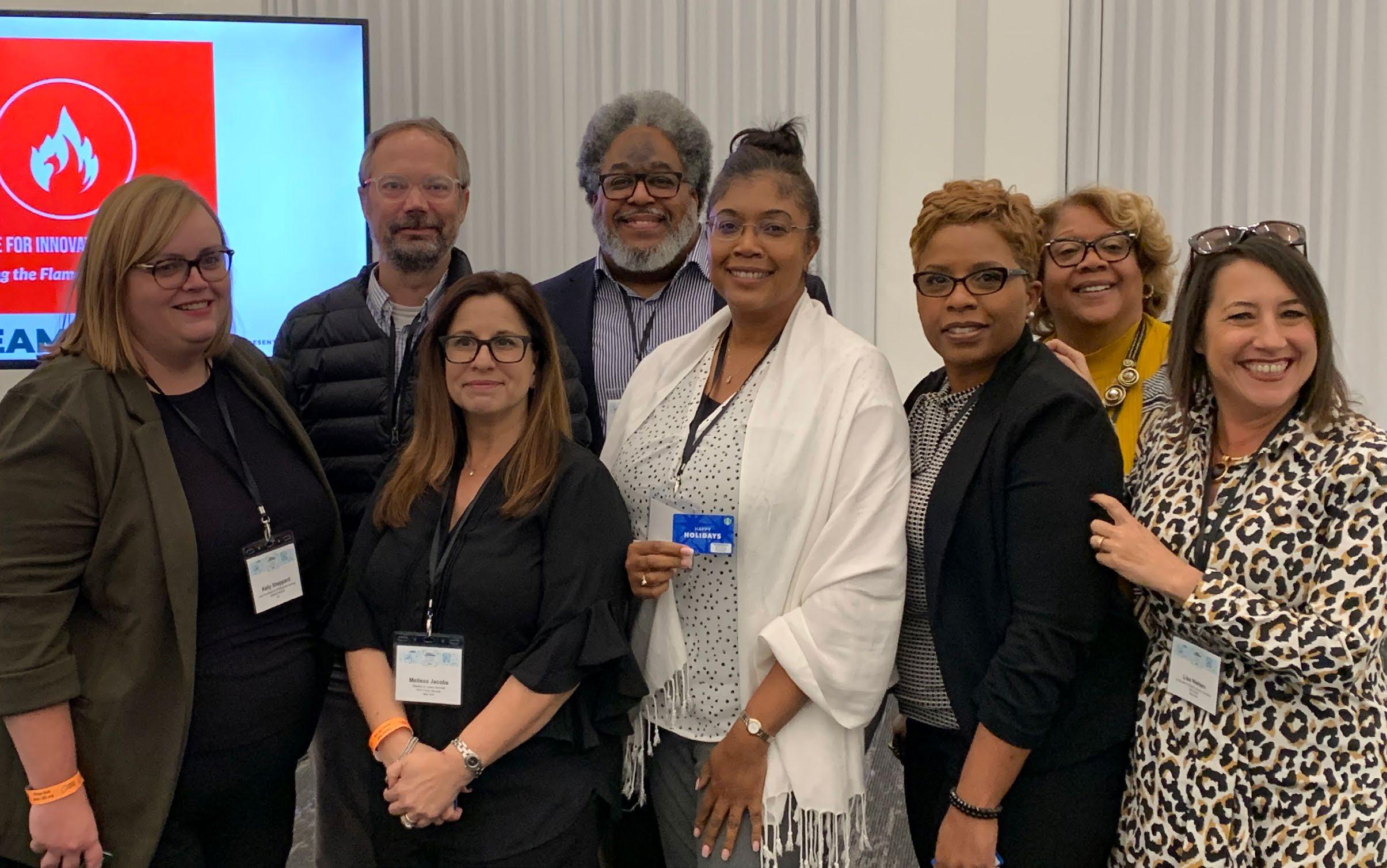 The winning team included: Kelly Shepard, Robert McCartney, Melissa Jacobs, Christopher Lockhar, T’Nesia Hurley, Faith Alcantara, MeLinda Gooch, Lisa Nielsen
The winning team included: Kelly Shepard, Robert McCartney, Melissa Jacobs, Christopher Lockhar, T’Nesia Hurley, Faith Alcantara, MeLinda Gooch, Lisa Nielsen
All of the teams presented impressive and innovative concepts. Watch the videos of each of the teams here to learn more about their visions for their future schools.
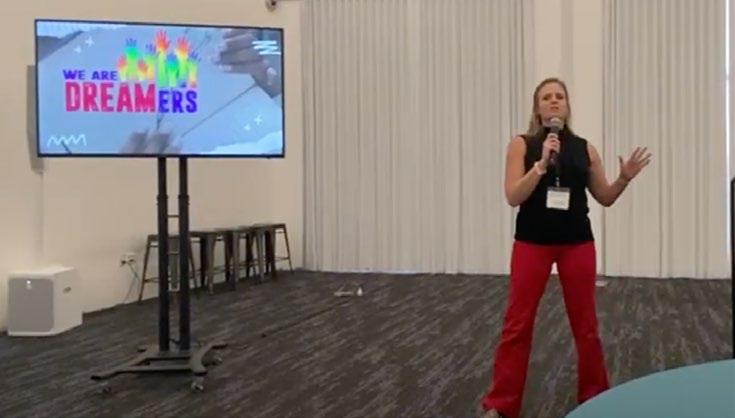
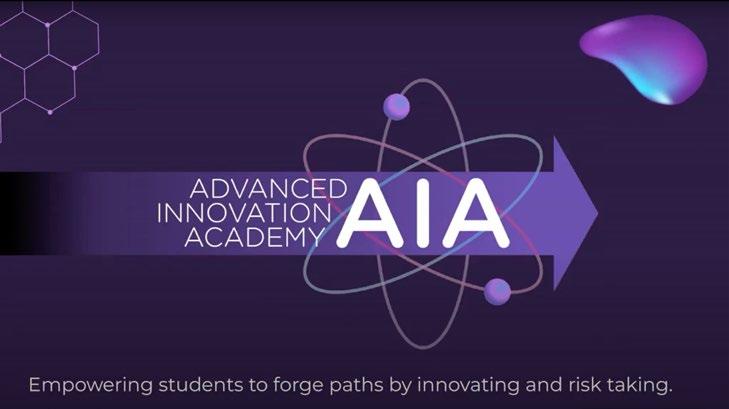

The Advanced Innovation Academy team included: Kristy Beam, Melissa Byrne, Bob Hunt, Brittney Reeves, Matt Fuller, Vivienne CollinsPerez, Larisa Luca
The Level Up Academy team included: Margaret Cunningham, Matthew Joseph, Kyle Zartman, Michael Gaskell, Heather Armelino, Jim Batson, Karee McAndrew, Aimee Bloom, & Tim Jaw %
The Innovative Learning Academy team included: Jennifer Duffer Phil Hintz, Martin Miller, Kristin Bowling, Frank Pileiro, Jackie Patanio, Andrew Fekete, Elyse Boyer
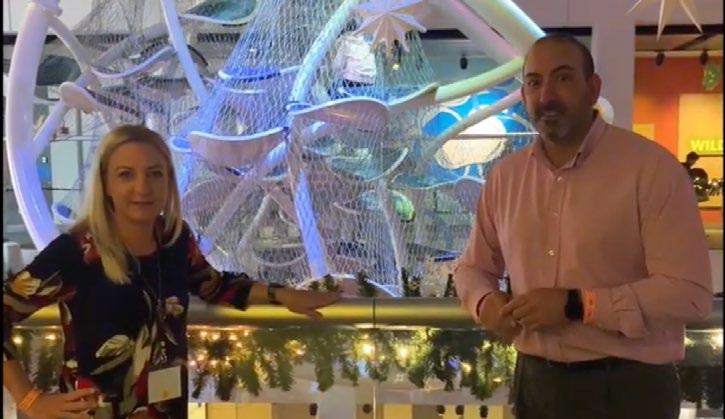
The Difference Maker Academy team included: Laura Ogando, Glenn Robbins, Kenneth Bouwens, Laurie Guyon, Kimberly Albin, Andrew Wallace, Brad Stewart, Deann Poleon

The D.R.E.A.M. Academy team included: Nikki Lavergne, Lissette GonzalezPerez, Jophrane Ligonde, Colleen Damian, Michael Marassa, Sandra Sades, Gina Tesoriero
Which team did you think presented the most innovative Future School plan? Take our poll here.
Results will be published on techlearning. com on January 30, 2023.
• All winners and finalists of the Tech & Learning Innovative Leader Awards were invited to the Innovation Summit. Interested in joining this growing community of Tech & Learning Innovative Leaders? Here’s how.

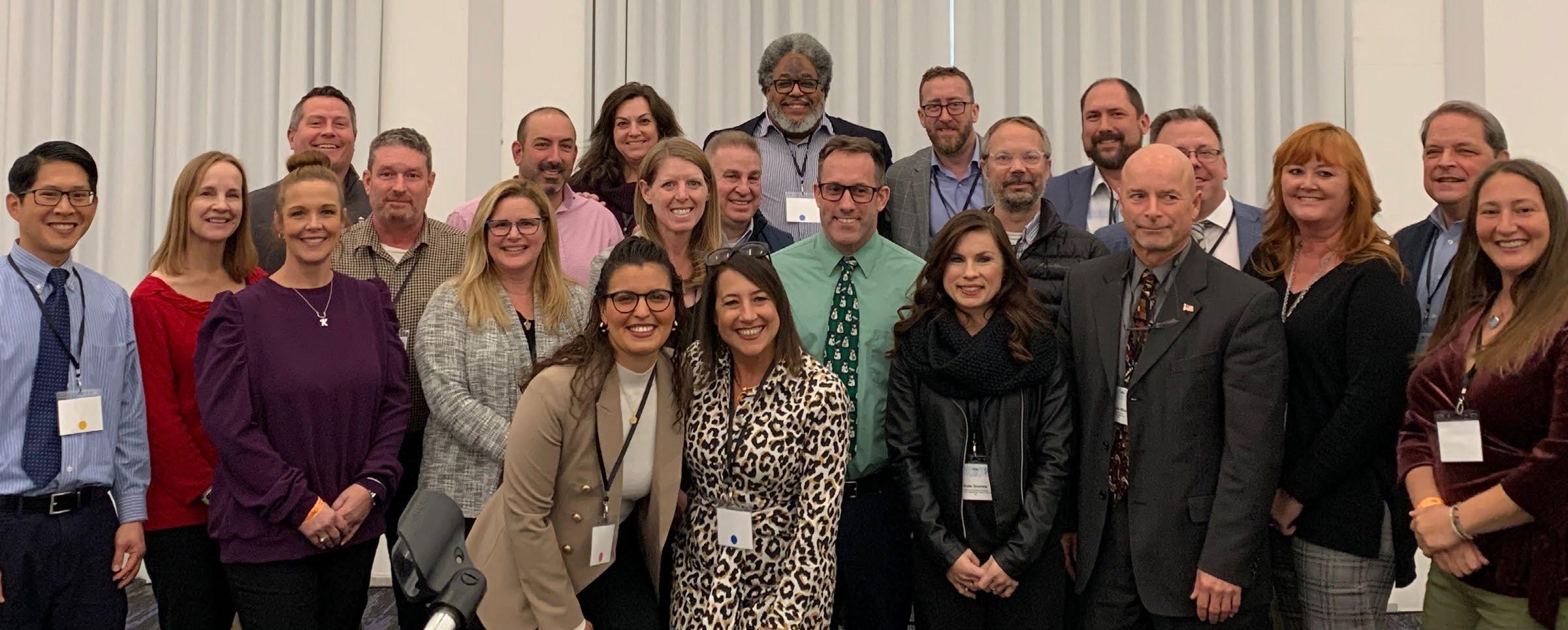
• As part of our Regional Live Summits, Tech & Learning recognizes exceptional district administrators in select regions around the country who are leading innovation in their schools. We’re seeking district leaders who are reimagining and reinventing education by developing and launching unique and forwardthinking programs, policies, and best practices that have shown to have a positive impact and
are also replicable at other districts.
• All finalists will receive an invitation to the Tech & Learning Regional Summit in their region, including a twonight hotel stay at the event, as well as an invitation to the 2023 Innovation Summit. All winners will be recognized in an issue of Tech & Learning and will receive a Tech & Learning Innovative Leader Award Seal that can be added to all district websites, etc. Winners will also be profiled in Tech & Learning magazine.
• Find our list of regions for award opportunities in 2023 here. We look forward to learning more about your work!
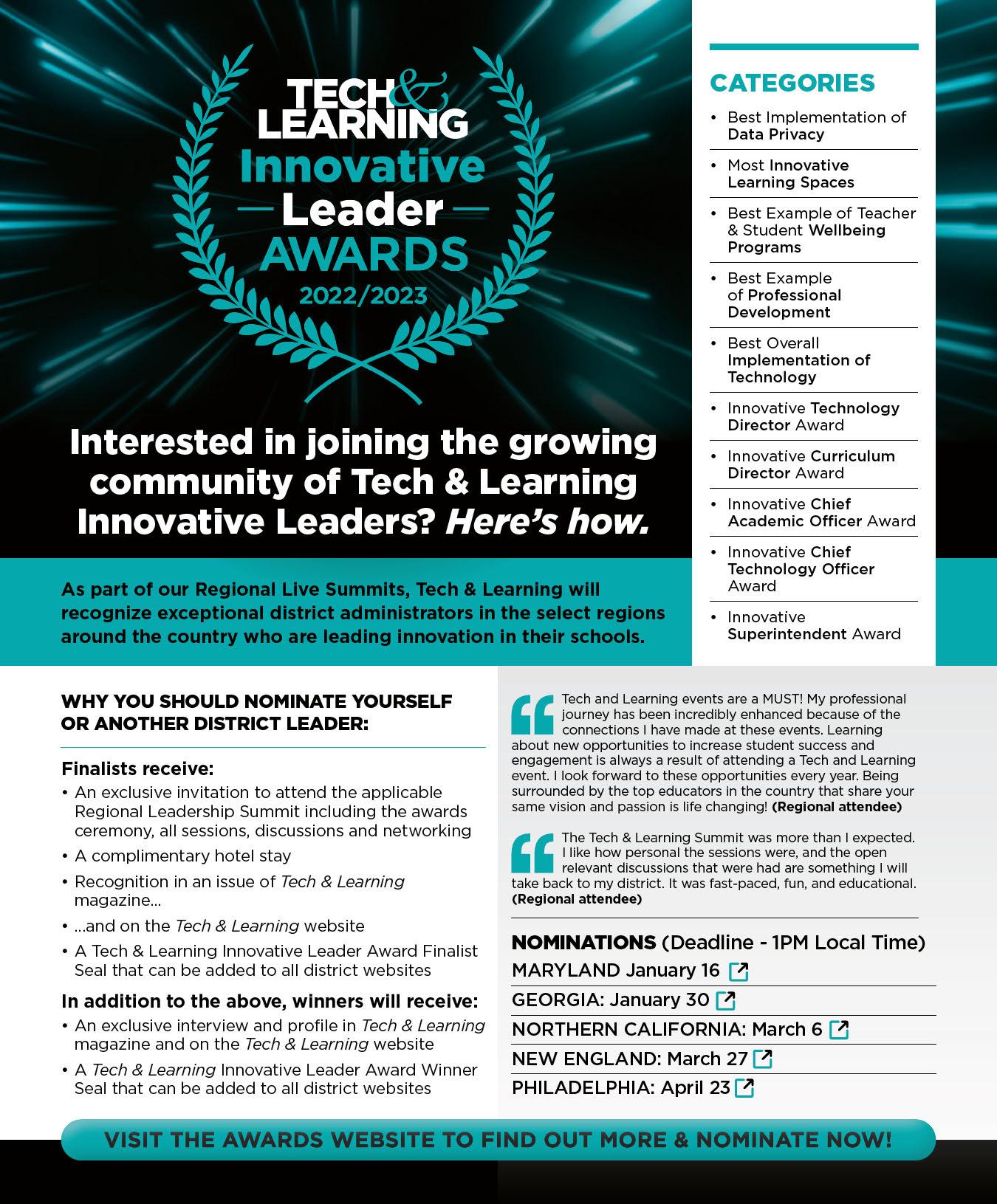

Nominees were asked to imagine what their future school district might look like if there were no barriers – unlimited funds, no politics, no state or federal mandates. And the winners are: The team from the education technology division of the New York City Department of Education: Lisa Nielsen, Laura Ogando, and Gina Tesoriero
Below are some ideas for their future school:
Students would be grouped by passions, talents, and abilities. The general learning space would be a community learning center.
Students would spend the majority of their time working
in apprenticeships and internships.
Everyone involved in the student’s life and learning –including family, peers and mentors – would participate in the evaluation process.
Instead of technology for all, students would be allowed to utilize the tech that best suited their needs.
Assessments would use the teacher’s anecdotal records, informal class assessments, and performance tasks.
Future school districts mindfully integrate technology and empower students to attune to their social/emotional/ wellness needs.
We asked each of our winners to answer the question: What is one piece of advice you would give to educators and administrators to become innovative leaders? Hear their answers by clicking the links below:
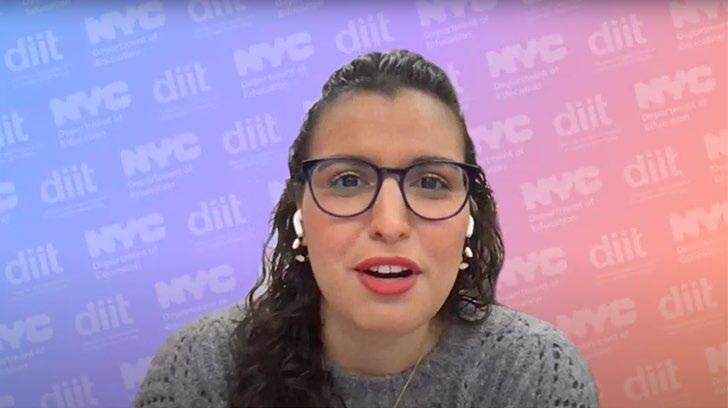

 Lisa Nielsen
Gina Tesoriero
Laura Ogando
Lisa Nielsen
Gina Tesoriero
Laura Ogando
